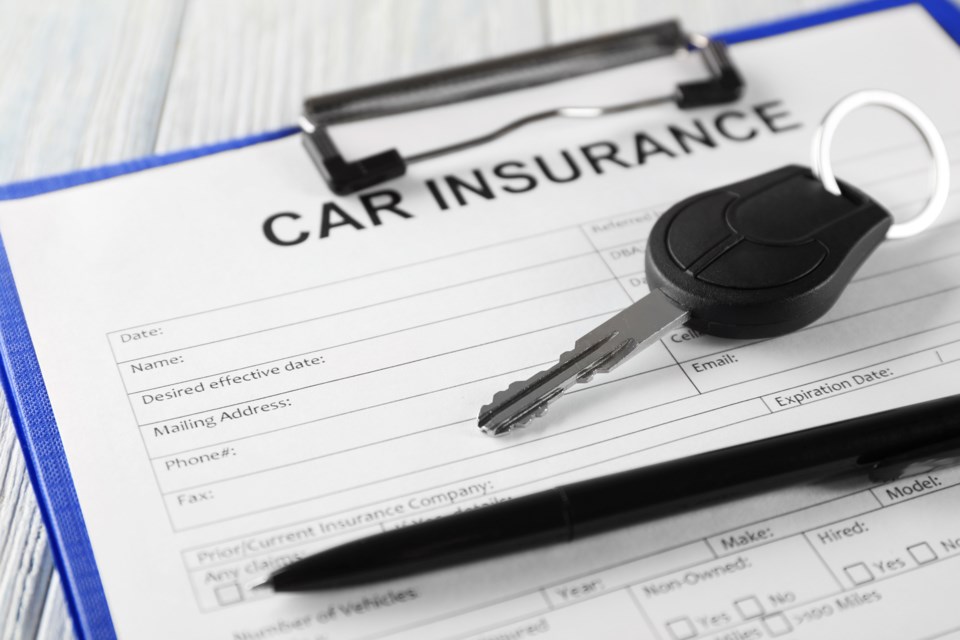WESTLOCK - The provincial government has appointed a three-person committee to make recommendations to reform the automobile insurance industry, while keeping it privately delivered.
In a Dec. 18 press conference finance minister Travis Toews announced the government’s intention of fixing the current system after hearing complaints from Albertans, insurance companies and other stakeholders over the last few months. A final report will be presented to government in the spring 2020 legislative session.
“We’ve allocated up to a million dollars for this panel,” said Toews.
The UCP government decided not to renew a cap on insurance rates put in place by the NDP in 2017, which limited insurance companies from increasing rates by more than five per cent. The cap expired Aug. 31 and since then, some Albertans have been faced with higher car insurance rates.
“Ultimately, under the cap we had insurers getting squeezed in the process, so Albertans were finding themselves with fewer and fewer insurance options. Some automobile owners were struggling to find a comprehensive coverage or collision coverage. Others weren’t availed of a rate plan. If we would’ve left the cap on, Albertans would have been basically on a decline in terms of insurance long-term,” said Toews.
The cap applied to a company’s entire automobile-related business, not to individual premiums, meaning some Albertans were still exposed to rate increases despite the cap.
“In my conversations with (Toews), the decision to lift the cap was essentially a recognition that it wasn’t working as intended to begin with … I had talked to individuals over the last year or so, (they) were starting to approach me in the previous mandate with regards to insurance increases that were significantly higher than the five per cent,” said Athabasca-Barrhead-Westlock MLA Glenn van Dijken Dec. 19.
“What I was seeing was that for individuals that had minor traffic infractions, insurance companies, it looked like they were using that as an excuse to raise premiums significantly.”
The increasing number of claims across the province resulted in higher insurance rates for some despite the cap on an insurance company’s overall business, as well as significant losses for those companies, said van Dijken.
“One part of it was a lot of cost in litigation … a lot of money essentially being spent on lawyers,” he said regarding minor injury claims.
“The three-person committee will look at what’s working and what’s not in our current automobile insurance system. They will look to find solutions that will make sense for Albertans. This committee will bring consumer and industry perspectives as they engage with a wide range of stakeholders including Albertans, the industry, medical services and the legal profession,” said Toews.
Sitting on the committee are Chris Daniel, chair, a previous police officer in the U.K. and Canada with 35 years of experience in the insurance industry; Shelley Miller as the legal expert; and Dr. Larry Ohlhauser as the medical community expert.
“Albertans experienced relatively stable auto insurance premiums for 10 years during the period 2004-2014. Since then, consumers have had to absorb escalating premiums beyond that which could be reasonably predicted. This cannot be allowed to continue,” said Daniel.
Among the factors cited for the increasing rates, Daniel mentioned climate change-related losses (Fort McMurray fires and hailstorms in Airdrie and Edmonton), automobile thefts (highest per capita in the country) and escalating minor injury claims.
Although not specific on the percentage that each factor contributes in the cumulated influence on premium costs, Daniel identified technology in new cars resulting in higher costs for repairs as another factor.
“We’ve all heard in the last little while about rural crime. This is an issue where automobiles are being stolen, broken into — those claims are escalating. We’ve looked at how that’s being addressed. I think the government has looked at hiring different peace officers and police to combat that, but that’s still an issue,” he added.
According to Insurance Bureau of Canada statistics, in 2017 Alberta accounted for 29 per cent of stolen vehicles across the country, the highest among the provinces. In numbers, it means an average of over 24,000 stolen vehicles a year.
The province is attempting to reach a place of “competitive sustainability” in the insurance industry. Despite claims of starting the committee work with no preconceptions, Daniel made it “abundantly clear” that one of the committee’s guiding principles is a private-sector delivery model for automobile insurance.
“That’s essentially identifying (that) we’re not wanting to move into a public system … because it’s shown to fail,” said van Dijken, naming B.C. as an example of the highest premiums in Canada.
“You would think that they have a monopoly on the system they should be the cheapest or in a position to be the cheapest. We believe in the free-market competitive model that ensures that we’re able to build efficiencies within the system.”
Loosely translated, “competitive sustainability” means more insurance company options, which the UCP believes will be the key to an “affordable, cost-effective model,” said Toews.
“Over the coming months, we will request submissions from stakeholders such as the insurance industry, the legal profession and others, as well as comments from Albertans to better identify their issues and potential options … The ‘how’ will be developed over the coming weeks,” said the committee chair.



